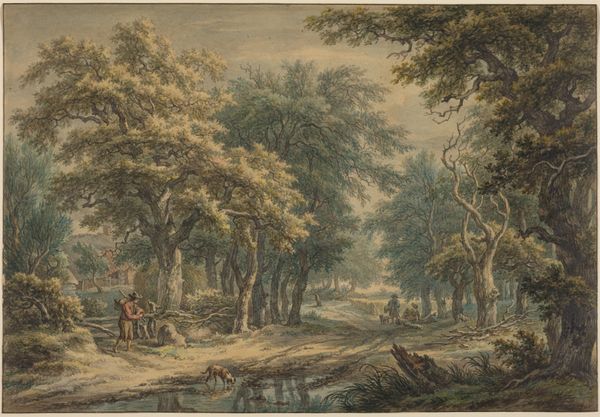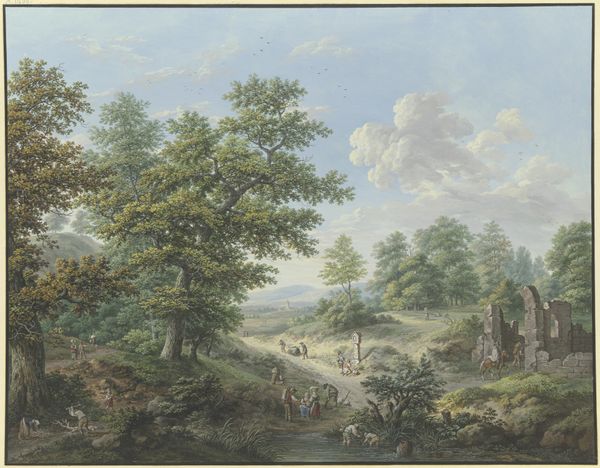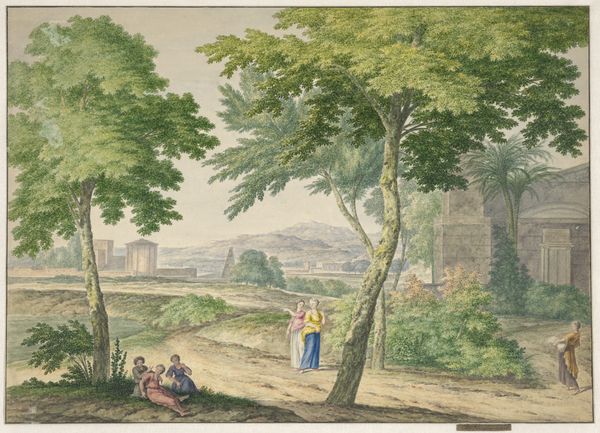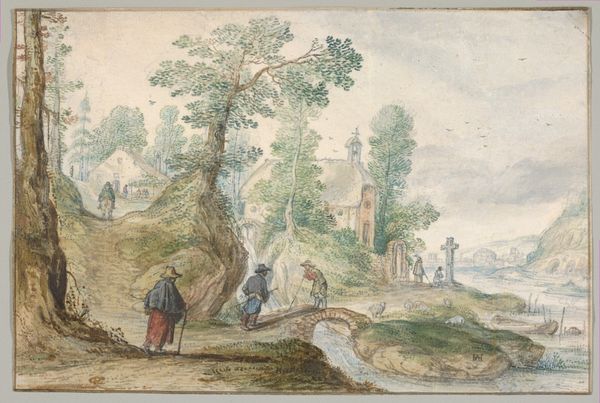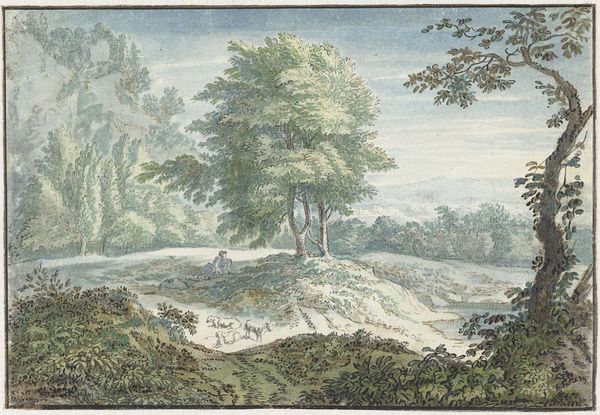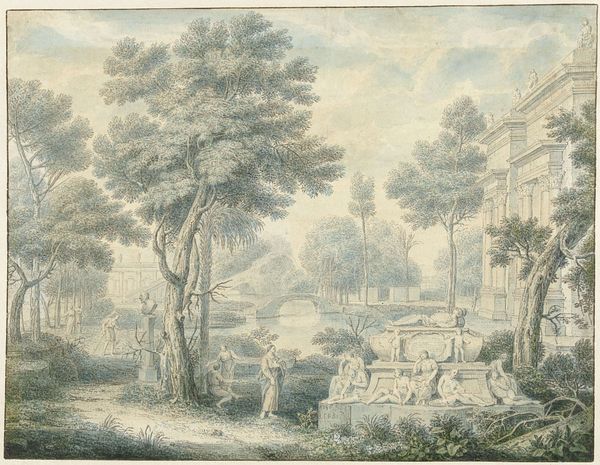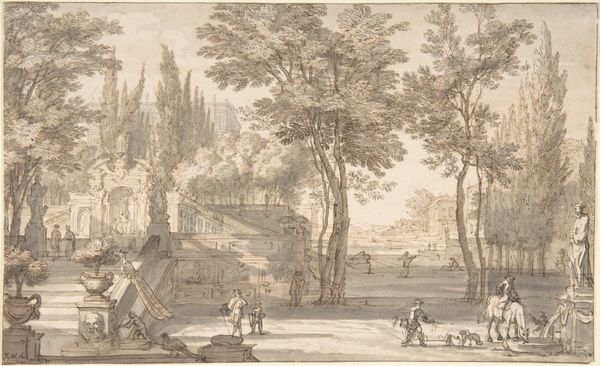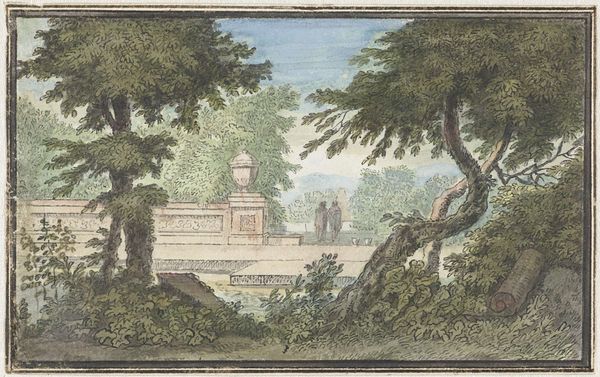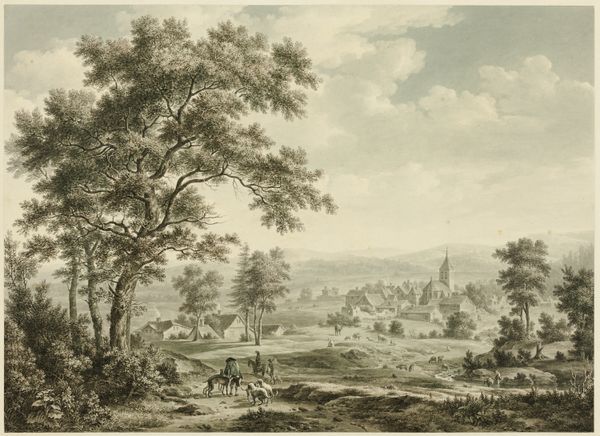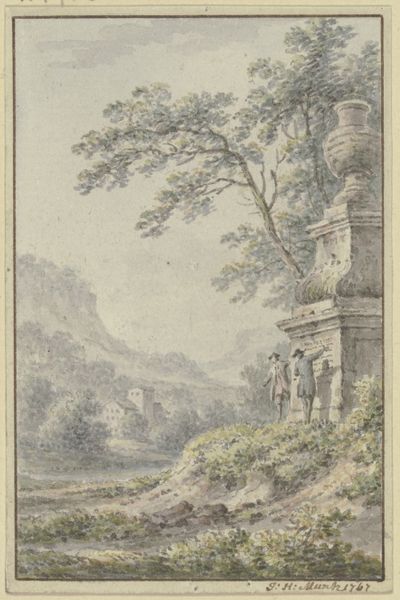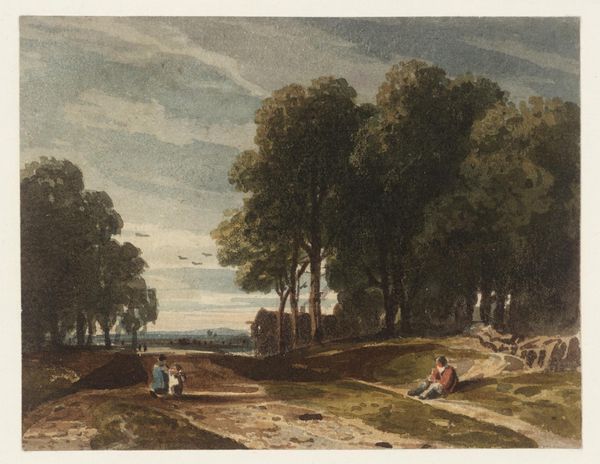
Arcadian Landscape with Figures Making Music 1700 - 1749
0:00
0:00
drawing, painting, watercolor
#
drawing
#
narrative-art
#
baroque
#
painting
#
landscape
#
figuration
#
watercolor
#
cityscape
#
watercolor
Dimensions: sheet: 9 3/16 x 13 9/16 in. (23.4 x 34.4 cm)
Copyright: Public Domain
Editor: Here we have Jan van Huysum’s "Arcadian Landscape with Figures Making Music," created sometime between 1700 and 1749, rendered in watercolor. I’m really struck by the idyllic scene, but also by the sense of manufactured leisure within the landscape. How do you read this work? Curator: It’s crucial to consider the labor required to create such a scene, both within the painting and in its production. Watercolor, seemingly effortless, demanded skill and access to specific materials like pigments and paper – reflecting trade networks and the artist's position. Think, too, about the implied labor behind the 'Arcadian' fantasy. Editor: So, the materials themselves hint at a social hierarchy? Curator: Precisely. The paper, the pigments, even the artist’s brushes – these were commodities shaped by economic forces. Van Huysum is selling a dream, a leisurely escape, but that dream is built upon real, material foundations and social structures. Consider how this idealized vision reinforces ideas about land ownership and control, hiding the true cost. How do you see the relationship between the figures and their environment? Editor: I see it as almost theatrical. They are posed and performing within the landscape, like props themselves. Curator: Exactly! They are carefully arranged within the frame, drawing attention to the artifice. Think about who this art was for, what fantasies it served, and the power structures it legitimized. What does analyzing its materials and construction tell us? Editor: That beauty, in art and life, often obscures the realities of production. Curator: Yes. We can appreciate the skill and composition, but also challenge the romanticization it presents, connecting the image to the larger world of labor and commerce.
Comments
No comments
Be the first to comment and join the conversation on the ultimate creative platform.

